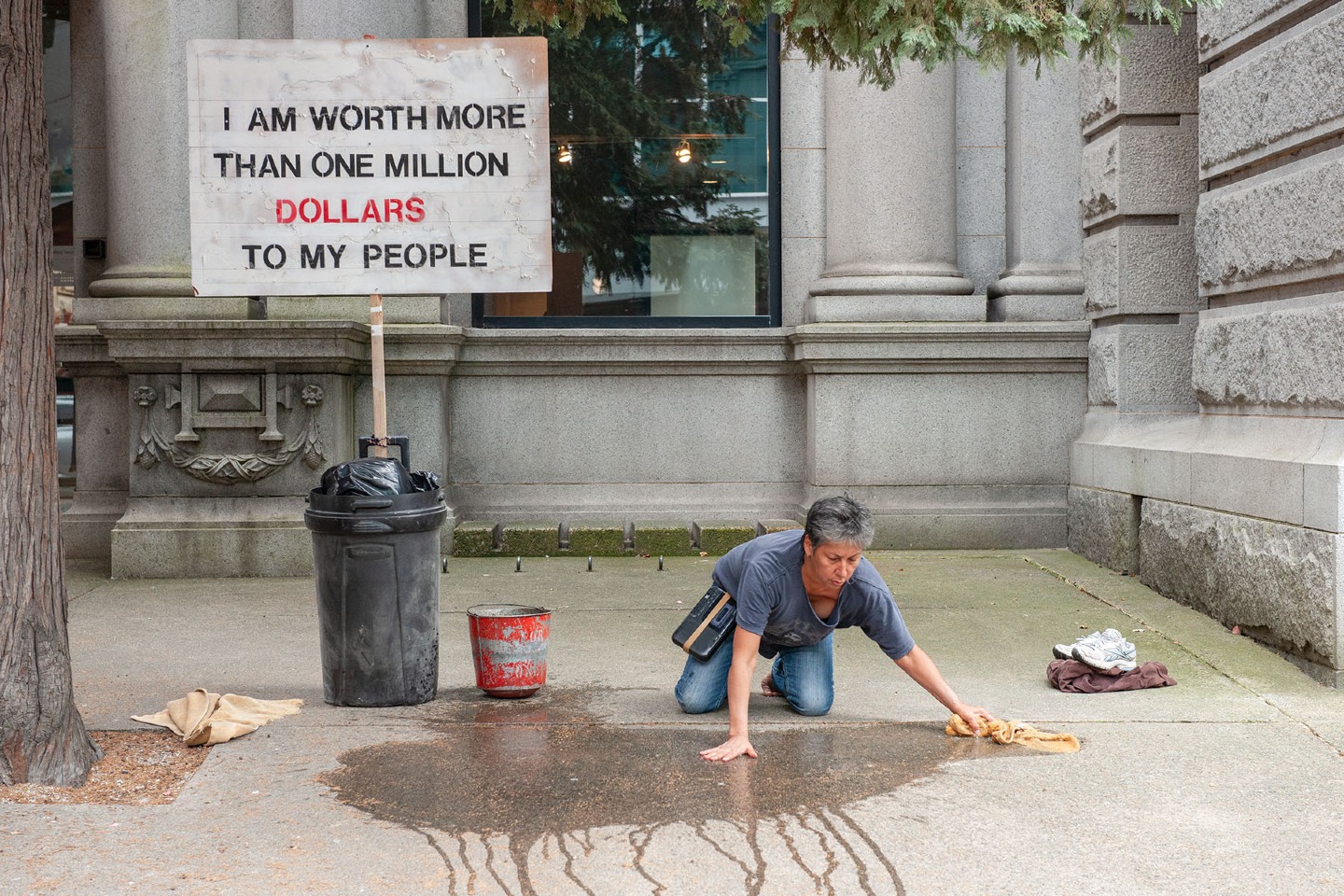Opening Friday, February 18, 7pm. Artist talk Saturday, February 19, 3pm. Exhibition runs to March 20, 2011.
Marina Roy’s exhibition What’s pushed out the door comes back through the window (part 2) sets up an arena of discursive activity between human, animal, myth, psychoanalysis, literature, and biopolitics. The artworks betray an impulse toward bricolage and the grotesque, a stylistic term that comes from the Latin grotto, meaning small cave. The original caves were in fact rooms and corridors of the Domus Aurea , an unfinished palace Nero had started in 64 AD but which was buried after his death and then forgotten over fifteen centuries before they were rediscovered. The walls of the rooms were covered in a decorative interweaving of hybrid plant, animal, human and mineral imagery. One of Roy’s approaches is to sift through literature and found imagery to uncover and reconstruct a metaphorical network of unconscious corridors and rooms, hinting at the many ways civilization has reconfigured the biological and the natural to political ends. The work points to how repressed desire and trauma always find a way back through the window, just as ‘nature’ finds ways of reasserting itself despite human/cultural control.
At La Centrale, Roy will present Apartment, a 56-minute animation whose structure is inspired by Georges Perec’s 1978 novel La vie: mode d’emploi, in which the author takes the reader through 100 rooms of an apartment building, following a knight’s move in chess. In Roy’s work, wild plants and animals slowly take over deteriorating rooms as the residents gradually succumb to a mysterious virus. The piece imagines a posthumanist scenario for a posthistorical heterotopic space. She will also show the letterpress prints, Kings and Creatures, which use a variety of formal textual devices to deliver words, phrases, and quotes that allude to the relationship between creaturely (or bare) life and sovereign power.
Marina Roy is a Vancouver-based artist who works across a variety of media, including drawing, painting, video, animation, sculpture, and writing. She has exhibited work in Canada, the United States, the UK, Europe and India. Incorporating raw and found materials, image and text, her work strives to create an allegorical visual language that reveals the ideological structures that bind us. In 2010 she was recipient of the VIVA art award, British Columbia’s largest visual arts award. In 2001 she published sign after the x (Artspeak/Arsenal Pulp), an encyclopedic book which revolves around the letter X and its multiple meanings in Western culture. This was also made into an interactive website in 2010, with David Clark and Graham Meisner (signafterthex.net). She is currently researching and writing a new book about human-animal distinction, biopolitics, and the letter Q, titled Queuejumping. She is associate professor in visual arts at the University of British Columbia.
The artist would like to thank Michelyne Roy, Graham Meisner, Abbas Akhavan, and Robert Tombs for assistance with production of many of the elements comprising this exhibition.
L’exposition Ce qui est jeté par la porte revient par la fenêtre (partie 2) de Marina Roy met en scène un espace d’activité discursive entre l’humain, l’animal, le mythe, la psychanalyse, la littérature et le biopolitique. Les oeuvres révèlent une impulsion vers le bricolage et le grotesque, terme stylistique provenant du mot latin grotto (grotte). Les grottes originales étaient en fait constituées de pièces et de corridors se trouvant dans la Domus aurea (ou Maison dorée), un palais construit par l’empereur Néron, commencé en l’an 64. Le palais ne fut jamais terminé, puisqu’il fut enterré après la mort de son créateur et oublié pendant quinze siècles avant d’être redécouvert. Les murs des salles étaient décorés d’un entrelacement d’images hybrides de plantes, d’animaux, d’humains et de minéraux. Une des approches de Roy est de parcourir la littérature et l’imagerie trouvées afin de dévoiler et reconstruire le biologique et le naturel à des fins politiques. Les oeuvres de Roy parlent des désirs et des traumatismes refoulés qui trouvent toujours le moyen de ressurgir, tout comme la «nature» trouve le moyen de se réaffirmer malgré l’emprise humaine et culturelle.
À La Centrale, Roy présente une animation de 56 minutes, intitulée Apartment, dont la structure s’inspire du roman de Georges Perec, La vie: mode d’emploi (1978). Dans ce roman, l’auteur transporte le lecteur à travers cent pièces d’un immeuble résidentiel, suivant les mouvements d’un chevalier pendant une partie d’échec. Dans la vidéo de Roy, des plantes et animaux sauvages prennent lentement le contrôle de chambres délabrées pendant que les résidents succombent graduellement à un mystérieux virus. L’oeuvre imagine un scénario posthumaniste pour un espace posthistorique hétérotope. Seront aussi exposées les impressions typographiques Kings and Creatures . Celles-ci utilisent divers mécanismes textuels formels afin de livrer des mots, expressions et citations faisant référence à la relation entre la vie des créatures et le pouvoir souverain.
Marina Roy est une artiste de Vancouver travaillant avec une diversité de médiums, dont le dessin, la peinture, la vidéo, l’animation, la sculpture et l’écriture. Elle a exposé au Canada, aux États-Unis, au Royaume-Uni, en Europe et en Inde. Utilisant des matériaux à l’état brut ainsi que des images et textes trouvés, son travail tente de créer une allégorie visuelle du langage qui révèle, à son tour, les structures idéologiques qui nous unissent. En 2010, elle fut récipiendaire du prix VIVA, le plus important prix en arts visuels en Colombie-Britannique. En 2001, elle a publié sign after the x (Artspeak/Arsenal Pulp), une publication encyclopédique portant sur la lettre X et ses multiples significations dans la culture occidentale. Ce projet fut aussi traduit sous forme de site web interactif en 2010, en collaboration avec David Clark et Graham Meisner (signafterthex.net). Marina Roy est présentement en processus de recherche et d’écriture d’un nouveau livre portant sur la distinction humaine/animale, la biopolitique et la lettre Q, intitulé Queuejumping. Elle est professeure associée en arts visuels à l’University of British Columbia.
L’artiste aimerait remercier Michelyne Roy, Graham Meisner, Abbas Akhavan et Robert Tombs pour leur aide avec la production de plusieurs des éléments compris dans cette exposition.

